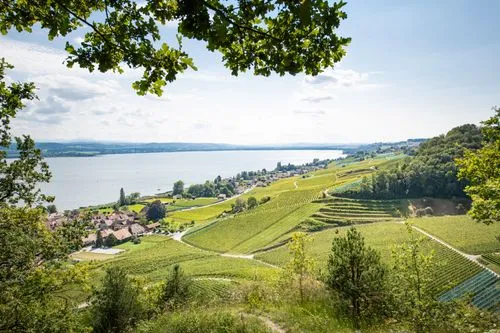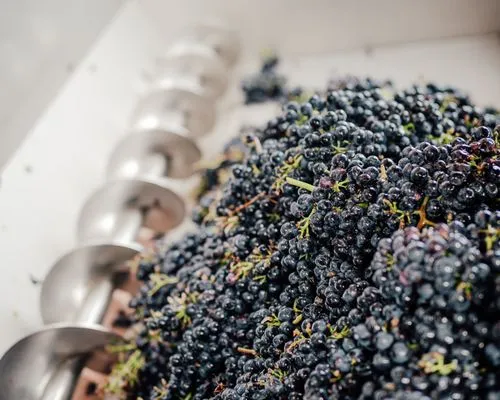Amigne
Grape variety White
Amigne lends itself to dry, medium-sweet and sweet wines, with the level of sweetness indicated by an exclusive Amigne de Vétroz label illustrating 1 (<8g/l), 2 (9-25g/l) or 3 (>25g/l) bees.
The dry and medium-sweet wines have aromas of lime tree tea, pear, citrus fruits, white pepper and in mouth noticeable yet delicate tannins, with a slightly bitter finish.
The naturally sweet wines ("raisined grapes") are characterised by orange and tangerine zest, dried apricots and a lovely balance in mouth, with a very long finish.
About the grape variety
A native grape variety of Valais (Switzerland), Amigne was mentioned towards the end of the 17th century between Sierre and Sion, before settling in Vétroz, which became its favourite terroir (70% of the surface area of Amigne in the world). Despite having Savagnin Blanc (known as Heida or Païen in Valais) and Gouais Blanc as possible grandparents, Amigne is not considered an orphan. Its reputed Roman origin does not have a serious basis in fact. Amigne is a chameleon grape that can produce dry, medium-sweet and sweet (raisined grapes) wines, the sugar level of which is indicated in Vétroz by a sticker illustrating 1-2-3 bees. The medium-sweet wines which constitute the majority of production coexist with naturally sweet wines (late harvest) of an extraordinary complexity and aging potential.
This variety can be used to make sweet wines according to the Grain Noble - ConfidenCiel charter
Distribution of grape varieties
Amigne is grown in several wine regions
100%
To visit our site, you must be of legal drinking age in your country of residence.



